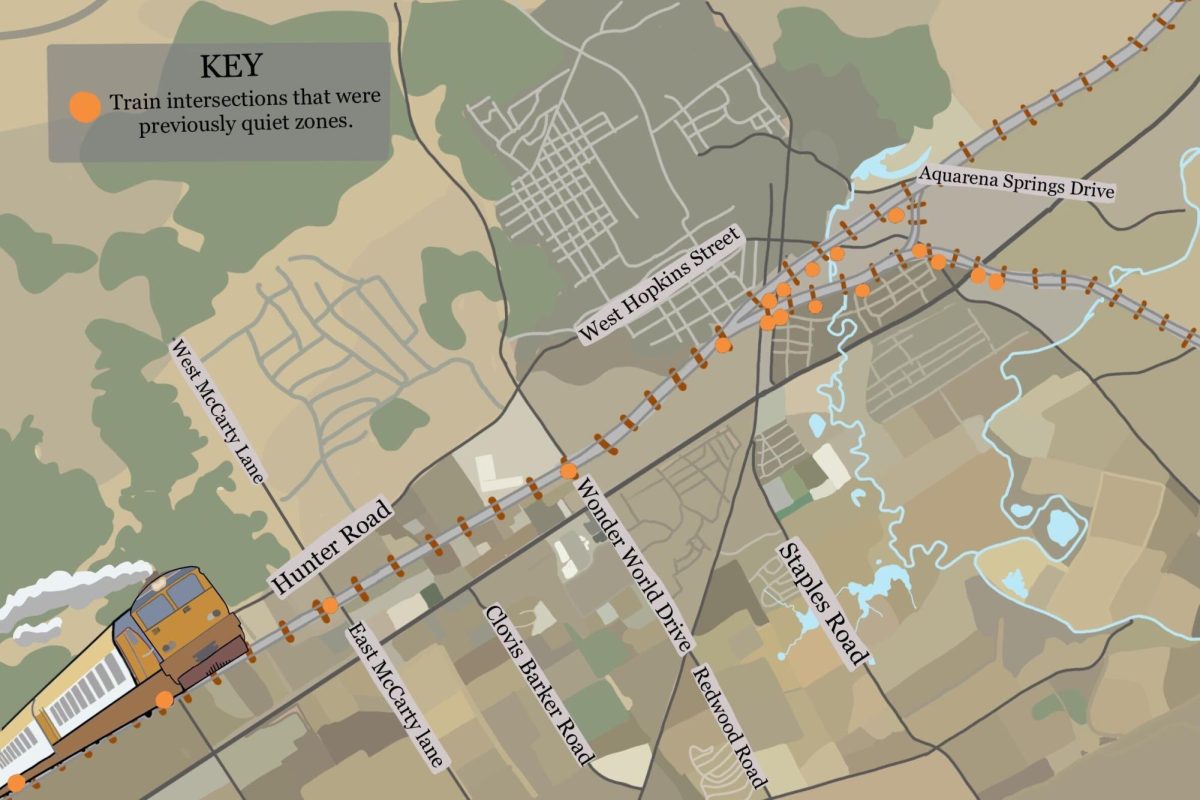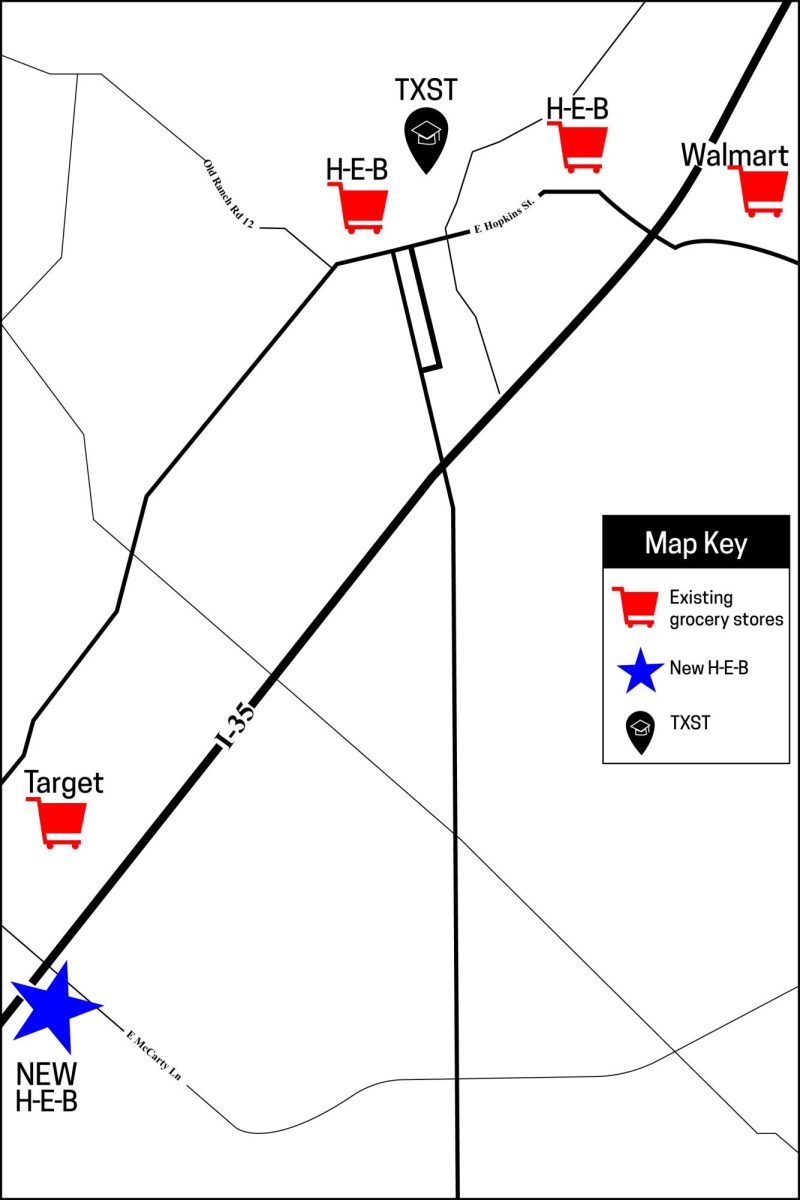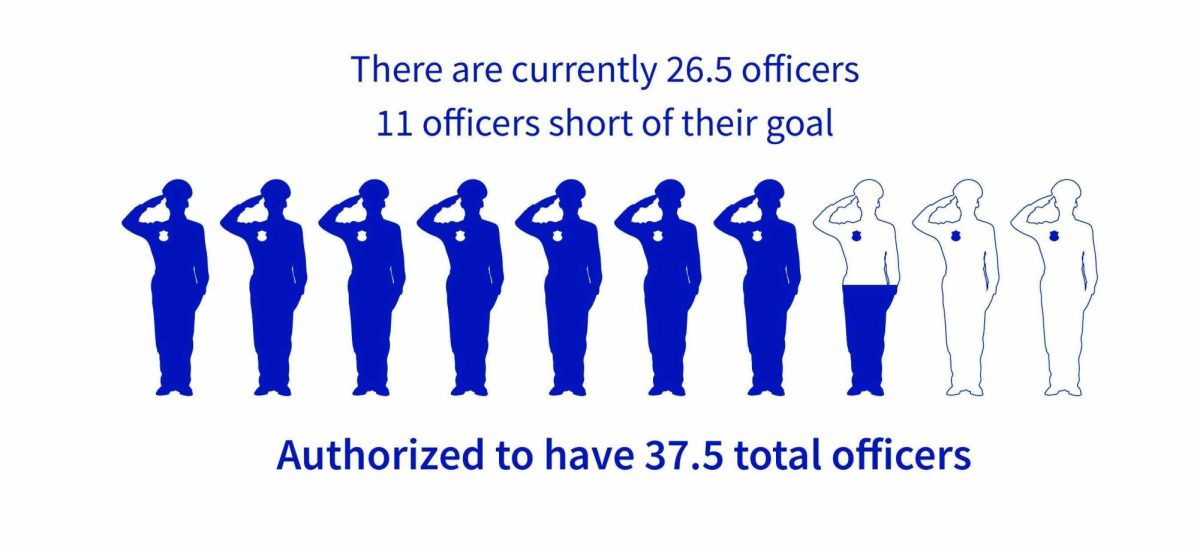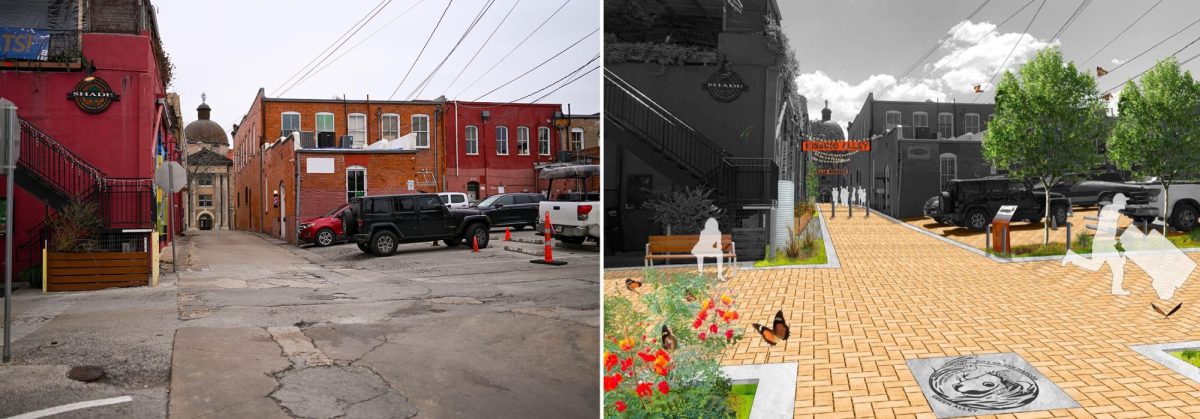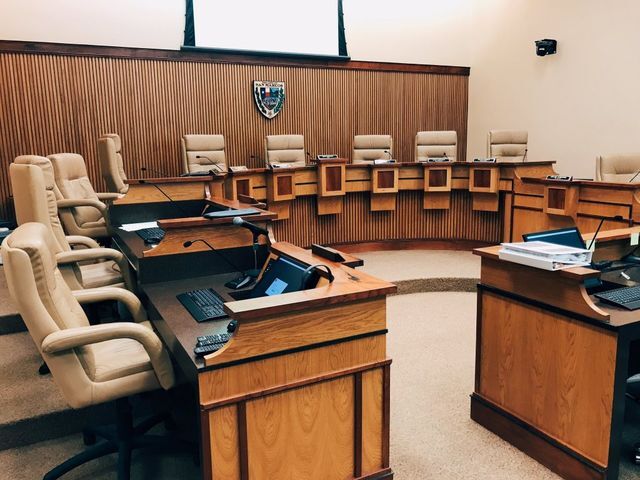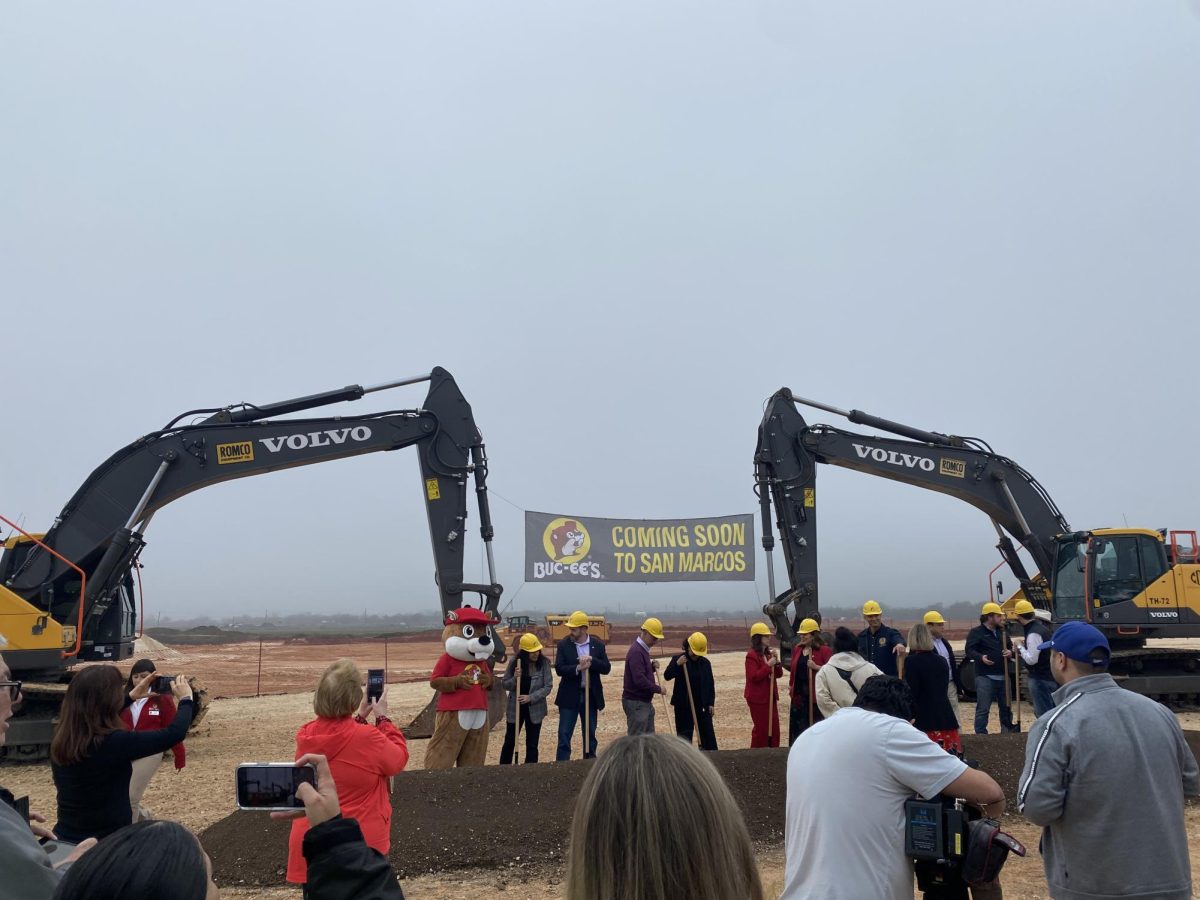San Marcos established quiet zones along its train tracks in 2015 to eliminate the noise of train horns. This summer marks the first time since then that train horns are sounding again at all intersections.
The quiet zones at San Marcos’ train crossings will be temporarily disrupted and these horns will continue to sound for three to six months while repairs are underway.
The Federal Railroad Administration (FRA) issued citations to dismiss the quiet zones at San Marcos railroad crossing intersections in June. The FRA revealed the city’s quiet zones need updates, according to Senior Engineer for the city of San Marcos Rey Garcia.
Garcia said the primary safety requirements for San Marcos are six-inch medians where tracks cross the road, striping that indicates stopping and various signage like “No Train Horn” signs. He said overlays, which is when two to three inches of asphalt is laid on roads to smooth or repair it, affect the median height at crossings.
“Many of the crossings that had violations were actually our roadways that were owned either by Hays County or by [the Texas Department of Transportation] that over time overlays inadvertently decreased the height of the curb,” Garcia said
According to the FRA, locomotive engineers are required to sound the train horn 15-20 seconds in advance of all public crossings. However, cities or counties, like San Marcos can establish “quiet zones” along a rail line with public crossings by meeting specific safety requirements which allow train engineers to safely cross an intersection without sounding their horn.
Garcia said the city was working on establishing another quiet zone on the north side of San Marcos in January when these safety violations were revealed.
Track crossings on McCarty Lane, Centerpoint Road and Hopkins Street were all cited for having curbs less than six inches. Multiple intersections were also cited for missing signs and faded striping.
“We’re currently in the process of getting all of— not just the ones that were cited, but every intersection inspected,” Garcia said. “It could take anywhere between three months at the earliest, to six months at the latest, but I’m hoping it won’t take six months.”
During the three to six month time period, all train horns will be sounding. All the intersections in San Marcos will be updated back into compliance and then the FRA has to inspect the cited intersections before reinstating the quiet zones.
Garcia said even after all approvals, there’s a transition period for all the train engineers to be notified and adjust to not sounding their horns.
“After we reestablish the quiet zone, the city is responsible for doing these types of inspections every two and a half to three years,” Garcia said. “We’re working with a third party consultant on these inspections and creating a checklist for future in-house crews to do our own inspections.”
Caitlin Buckmaster, a biology junior and resident at The Outpost on Post Road has been hearing the horns by her apartment and said before the quiet zones, Post Road was peaceful.
“The train horns haven’t been noticeable during the day but they are at night,” Buckmaster said. “It’s really inconvenient when I’m studying in my living room and the horns sound.”
Vanessa Hughes, a pre-nursing sophomore, has also lived at The Outpost on Post Road for about a year and said she appreciated the repairs being done in the summer.
“While it does suck for students taking summer classes, I’m glad they’re not doing the repairs in the fall where more students would be affected,” Hughes said. “My roommates and I have been able to adjust to the train horns quickly, and the sound doesn’t wake me up if I’m already asleep.”
Hughes and Buckmaster said they weren’t notified about the disrupted quiet zone on Post Road beyond the city’s press release. Buckmaster found out when she saw a sign by the tracks near Rio Vista Park.
“The horns aren’t necessarily a big issue once you adjust to them, but I’m disappointed there wasn’t more communication or signage from the city or my apartment,” Buckmaster said.


